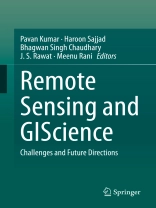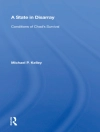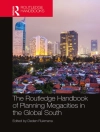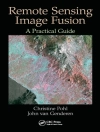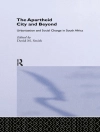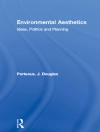This book covers several themes related to forestry, agriculture, water, soil, urban, and atmospheric research. GIScience technology systems have increased in significance in recent decades and have the ability to acquire information at ground level with a higher spectral resolution using a field radio-spectrometer, which is a great improvement compared to other remote sensing systems. GIScience technology systems are widely used for solving and understanding the concept of forestry, crop, water resources, and related research themes. This book aims to advance the scientific understanding of GIScience technology and applications. The chapters present GIScience data integration with other sources such as Li DAR, Multi-spectral data and their applications in forestry, crop assessment, soil assessment, mineral mapping and related themes. The book will be of interest to geospatial experts, modellers, foresters, agricultural scientists, hyperspectral remote sensing and space community, ecologists and conservation communities, environmental consultants, big data compilers, and computing experts.
Tabela de Conteúdo
Section 1 General.- Chapter 1: Introduction to Challenges and Future Directions in Remote Sensing and GIScience.- Section II Challenges in Sustainable Natural Resources Management.- Chapter 2: Environmental and Livelihood Impact Assessment of 2013 Flash Flood in Alakananda and Mandakini River Valley, Uttarakhand (India) using Environmental Evaluation System and Geospatial Techniques.- Chapter 3: Assessment of Vegetation Vigor using Integrated Synthetic Aperture Radars.- Chapter 4: Landslide Susceptibility Mapping using Bivariate Frequency Ratio Model and Geospatial Techniques: A Case from Karbi Anglong West District in ASSAM, India.- Chapter 5: Retreating Glacier Dynamics over the last quarter of a century at Uttarakhand Region using optical Sensors Time Series Data.- Section III Remote Sensing and GIScience in Urban Growth Management.- Chapter 6: Studying the Impact of Urbanization on HYV Rice Fields at a Local Level using Fine Resolution Temporal RISAT-1 Datasets.- Chapter 7: Identification of Impervious Built-up Surface Features using Resources at 2 LISS-III based Novel Optical Built-up Index.- Chapter 8: Assessment of Building Subsidence in Hanoi Urban Area from 2011 to 2014 by high resolution Radar satellite images.- Chapter 9: Land Use/Land Cover Mapping for Sustainable Land Resources Development of Hisar District, Haryana, India.- Section IV Challenges and Future Directions in GIScience.- Chapter 10 A Spatial Investigation of the Feasibility of Solar Resource Energy Potential in Planning the Solar Cities of INDIA.- Chapter 11 Mapping Rice Growth Stages Employing MODIS NDVI and ALOS AVNIR-2.- Chapter 12 Habitat Suitability Mapping of Sloth Bear (Melursus ursinus) in the Sariska Tiger Reserve (India) using a GIS-based Fuzzy Analytical Hierarchy Process.- Chapter 13 Estimation of Air Pollution Using Regression Modelling Approach for Mumbai Region Maharashtra, India.- Chapter 14 Mapping of Agriculture Productivity Variabilityfor the SAARC Nations year 2050.- Section V GIScience for Revolution in Science and Society.- Chapter 15 Future Direction of GIScience for Revolution in Science and Society over the Past Twenty Years.
Sobre o autor
Dr. Pavan Kumar is a Faculty of College of Horticulture and Forestry, Rani Lakshmi Bai Central Agricultural University, Jhansi, U.P., India. He obtained his Ph.D degrees from Faculty of Natural Sciences, Jamia Millia Islamia, New Delhi. He did B.Sc. (Botany) and M.Sc. (Environmental Science) from Banaras Hindu University, Varanasi, India and subsequently obtained Master’s degree in Remote Sensing (M.Tech) from Birla Institute of Technology, Mesra Ranchi, India. His current research interests include Climate Change and coastal studies. He is recipient of Innovation China National academy award for Remote Sensing. Dr. Kumar has published fifty research papers in National journals and authored a number of books. He has visited countries like USA, France, the Netherlands, Italy, China, Indonesia, Brazil and Malaysia for various academic/scientific assignments, workshop and conferences. Dr. Kumar is a member of International Associations for Vegetation Science, USA and Institutionof Geospatial and Remote Sensing, Malaysia.
Prof. Haroon Sajjad is Professor in the Department of Geography, Faculty of Natural Sciences, Jamia Millia Islamia, New Delhi, India. His present research interests include environmental management, sustainable development, watershed management and applications of remote sensing and GIS. He authored four books. He has published more than hundred research papers in journals of international repute. Prof. Sajjad has presented fifty research papers at national and international conferences. Ten doctoral degrees to the scholars have been awarded under his supervision. He is the reviewer of many scientific research journals and member of various scientific bodies.
Prof. Bhagwan Singh Chaudhary is currently working as Professor and Chairman, Department of Geophysics, Kurukshetra University, India since December 2017. He is also holding the position of Registrar (offg.) of Kurukshetra University since June 5, 2020. He has also worked as founder Registrar, Chaudhary Bansi Lal University, Bhiwani from Aug. 2014 to Dec. 2017. Prof. Chaudhary started his career as Scientist at Haryana Space Application Centre, Hisar in 1990 and worked till 2004. Prof. Chaudhary was awarded DAAD fellowship at University of Freiburg, Germany from 1997–1999. He is working in the domain of Geospatial technology for natural resources for about 30 years and has published more than 70 research papers in various national and international journals/ conferences. He has visited many countries like USA, UK, Austria, Germany, France, the Netherlands, Switzerland, Poland, China, South Africa, Indonesia, Bangladesh, Sri Lanka, Nepal and Thailand for various academic/scientific assignments and conferences.
Prof. J. S. Rawat is presently Director of Centre of Excellence for Natural Resources Data Management Centre of Uttarakhand (COE NRDMS); Coordinator of M.Sc Remote Sensing and GIS Course of Kumaun University; and Director of Uttarakhand Centre on Climate Change. He is Gold Medalist of the Kumaun University and has been Fulbright Fellow USA in 1988. Dr. Rawat was awarded Senior Fulbright Fellowship by the Council for International Exchange of Scholars, Washington, D. C., USA, in 1988. Prof. Rawat has published about 122 research papers in international/national journals/books; written three books; participated in 15 International conferences including in Canada, Germany and China; participated in 89 conferences/expert committee meetings in India.
Dr. Meenu Rani received her M.Tech degree in Remote Sensing from Birla Institute of Technology, Ranchi, India. She is currently affiliated to Department of Geography, Kumaun University, Nainital, Uttarakhand, India. She has worked on remote sensing applications as a Junior Research Fellow in HARSAC, Research Associate in Indian Council of Agricultural Research and GB Pant National Instituteof Himalayan Environment and Sustainable Development. Dr. Rani has authored and co-authored several peer-reviewed scientific research papers and presented works at many national and international conferences including the USA, Italy and China. She has been awarded with various fellowships from the International Association for Ecology, Future Earth Coast and SCAR Scientific Research Programme. She was awarded early career scientist achievement in 2017 at Columbia University, New York, USA.
